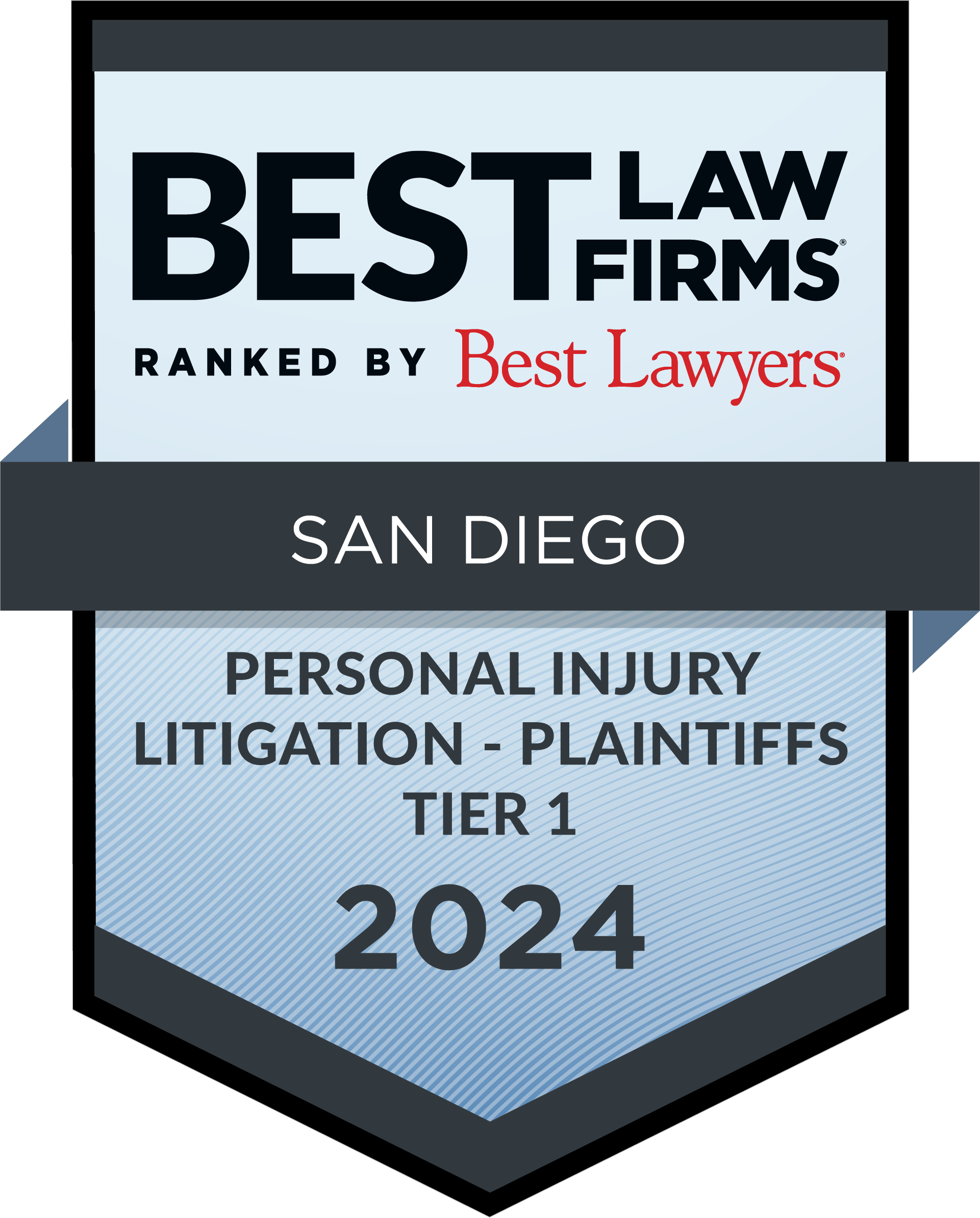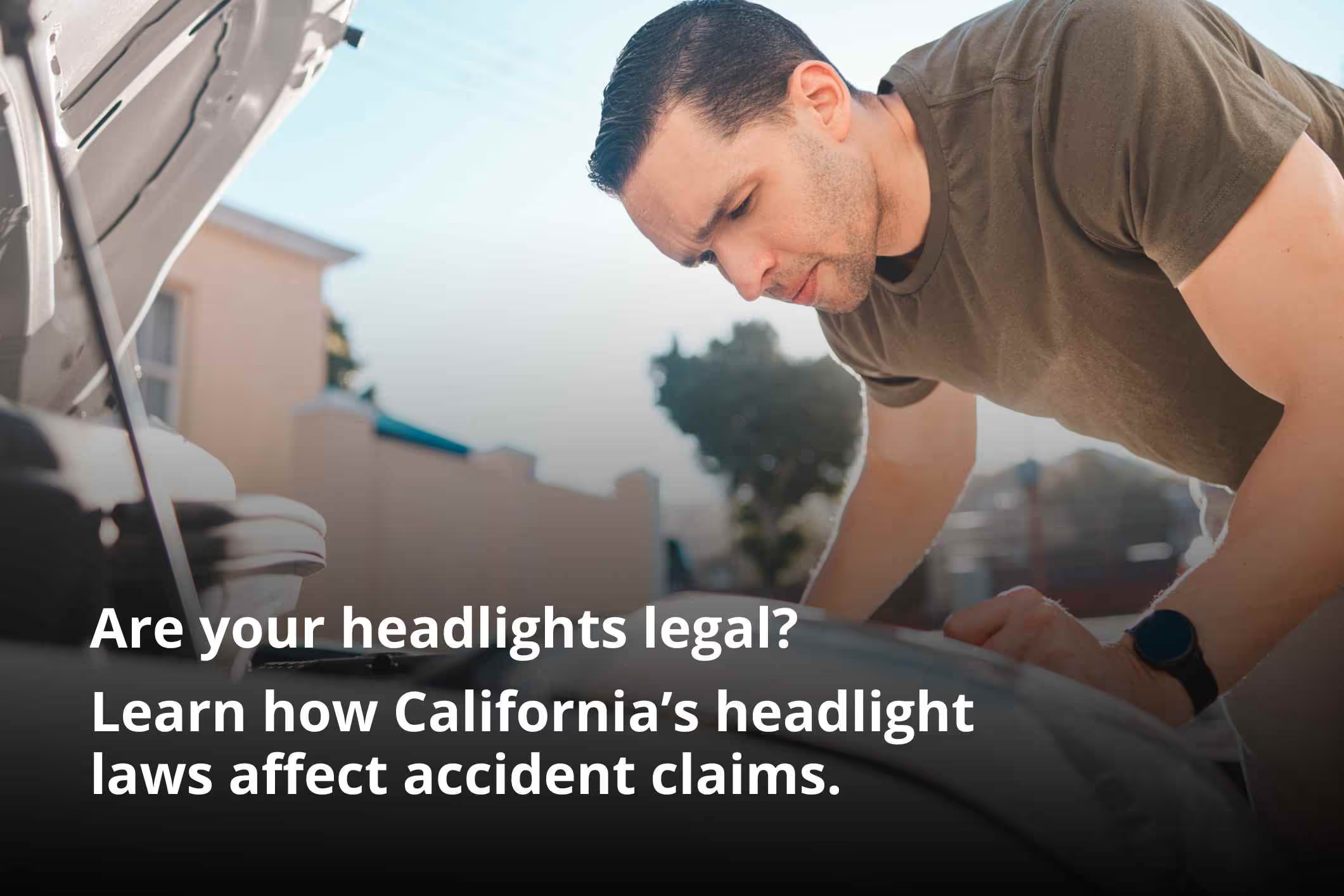We all know to stop at red lights, obey speed limits, and check our mirrors. But here’s a question most drivers don’t think about: Are you using your headlights correctly?

Headlights are a vital safety feature, and California has specific laws governing when and how they must be used. Understanding these rules isn’t just about avoiding a ticket. It’s about protecting yourself, protecting others, and making sure you’re on the right side of the law.
At Thorsnes Bartolotta McGuire, we’ve been standing up for injured Californians since 1978. If you or a loved one were hurt in a car accident where headlight misuse may have been a factor, we’re here to help determine whether the other driver failed to follow California’s headlight laws and whether that failure contributed to the crash. Reach out to our team today online or by calling (619) 236-9363.
When Should You Turn On Your Headlights in California?
Many people assume headlights are only needed when it’s completely dark, but the California law states that you must drive with your headlights on in more situations than you might think. Being proactive about visibility is always better than being sorry later.
The California Vehicle Code (CVC) Section 24400 gives us clear guidelines. You are required to have your lights on:
- From Sunset to Sunrise: California law requires drivers to turn on their headlights from 30 minutes after sunset until 30 minutes before sunrise.
- When Visibility is Low: The law requires you to use your headlights any time there is not enough light to clearly see a person or vehicle at a distance of 1,000 feet. If you’re driving through heavy fog, thick smoke, or a dust storm, even if it’s the middle of the day, your headlights need to be working and turned on.
- When Using Your Windshield Wipers: This is a key rule people often forget. If you are using your windshield wipers continuously due to rain, snow, or mist, your headlights must be on.
- In Tunnels and Designated Areas: Many major tunnels, like those through mountains, require the use of headlights. Pay attention to signs indicating that headlights are required, especially when entering these covered areas.
The Rules for Using High Beams
You’re driving down a dark road at night when suddenly you’re hit with a strong glare from an oncoming car’s high beams. It’s blinding, disorienting, and can make it difficult to stay focused on the road. Most drivers have experienced this at some point, and it’s a clear example of why California has specific laws about when high beams should be used.
High beams are helpful for lighting up dark, rural roads where there’s no street lighting, but if used incorrectly, they can put other drivers at serious risk. Knowing the proper use of high beams is a crucial part of the California headlight law.
The CVC spells out exactly when you must switch from your blinding high beams to your standard low beams:
- When Approaching Another Vehicle: If a vehicle is approaching you from the opposite direction, you must dim your high beams to low beams when you are within 500 feet of that vehicle.
- When Following Another Vehicle: If you are driving behind another vehicle, you must dim your high beams when you are within 300 feet of them. Blasting high beams into a driver’s rear-view mirror can be just as dangerous and distracting as doing it head-on.
Using your high beams properly shows common courtesy and, more importantly, keeps you in compliance with the rules of the road.
What Are Legal Headlights in California?
When it comes to legal headlights in California, it’s not just about the bulbs your vehicle came with from the factory. With the growing popularity of aftermarket modifications, many drivers are choosing brighter lights or unique designs to enhance visibility or style. However, California law is very specific about what’s allowed and what isn’t.
Headlight Brightness and Functionality
All headlights used on public roads must meet both federal and California performance standards, meaning they can’t be excessively bright or too dim to be effective.
- Too Bright: While some aftermarket headlight modifications are legal in California, it's important to know when high-intensity headlights cross the line. HID (High-Intensity Discharge) headlights must not exceed 2,513 lumens to be street legal.
- Too Dim or Non-Functional: On the other hand, headlights that are burnt out, damaged, or not functioning properly are also a violation. California requires two working headlights that are in good condition. Driving with only one working headlight is grounds for a traffic stop and may be seen as negligence if you're involved in a collision.
Aftermarket Modifications
Customizing a vehicle’s headlights may seem like a harmless way to express personal style, but certain modifications are not legal on California roads.
- Strobing or Flashing Lights: These types of lights may look impressive at car shows or in off-road settings, but they are strictly prohibited while driving on public roads. Flashing or strobing headlights are reserved for emergency vehicles like police cars, ambulances, and fire trucks, as well as certain authorized tow trucks.
- Light Bars: Off-road LED light bars are popular on trucks and SUVs, but they are not permitted for use during regular street driving. If your vehicle has a light bar, it must be fully covered whenever you're driving on a public street or highway. The light output from these bars is far too intense for safe use in traffic.
Headlight violations may seem minor, but they can carry major consequences in an accident case and lead to severe injuries. Insurance companies may use them to shift blame or reduce your claim. That’s why it’s important to work with a legal team that understands how headlight laws impact liability.
At Thorsnes Bartolotta McGuire, we carefully investigate whether another driver failed to follow California’s headlight laws and whether that contributed to your injuries. Get in touch with our team today online or by calling (619) 236-9363.
California Headlight Law on Color, Positioning, and Maintenance Rules
California law is very specific about the color and placement of headlights because these factors significantly affect visibility and can prevent confusion among drivers.
Color Rules
When looking at the front of your vehicle, the only legal colors for headlights are:
- White
- Yellow
- Amber
Any forward-facing light that shines blue, green, purple, or red is illegal.
While decorative colored lights inside the vehicle may be seen, any light source attached to the exterior that emits a color other than white, yellow, or amber to the front is generally against the law.
Positioning and Aim
Headlights must be securely mounted and positioned correctly:
- Height: Headlights must be between 22 inches and 54 inches from the ground.
- Aiming: Your headlights must be aimed properly. Lights pointed too high can blind oncoming drivers, even when using low beams. This issue often arises after a vehicle has been lifted, lowered, or involved in a collision where the aim has shifted.
How California Law on Headlights Affects Car Accident Cases
In a car accident, the condition and use of your headlights can affect who is held responsible and how much compensation is awarded.
When the Other Driver Breaks the Law
Many crashes involve headlight violations, such as:
- Driving without headlights on a dark road
- Using illegal colors or overly bright lights
- Blinding other drivers with high beams
If a driver breaks a headlight law and causes a crash, that’s considered negligence.
When Your Headlights Are the Issue
If your own headlights were broken, too dim, or out of compliance, that could reduce your compensation. California uses pure comparative negligence, meaning your payout is reduced by your percentage of fault. So if you’re found 30% at fault because of a headlight issue, your settlement would be reduced by 30%.
Protect Yourself on the Road With Thorsnes Bartolotta McGuire
Whether it’s turning on your headlights when your wipers are on, avoiding illegal colors, or replacing a dim bulb, these small details can make a big difference in both safety and liability.
At Thorsnes Bartolotta McGuire, we’ve been standing up for injured Californians for over four decades. With over $2 billion recovered in verdicts and settlements, we’ve built a reputation for taking on tough cases and delivering results.
If you were injured in a crash and believe a headlight violation may have played a role, whether it was your vehicle or someone else’s, don’t wait to get answers. Call us today at (619) 236-9363 or contact us online to speak with a member of our team.




